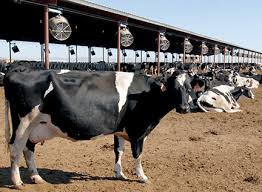Milk import levies fund heifer purchases
GOVERNMENT is working on increasing the national dairy herd from 25 000 to 60 000 in line with the Livestock Recovery and Growth Plan. Matabeleland has 1 000 dairy cows constituting 4 percent of the national herd.
The interventions by Government include increasing the region’s herd to 15 000 and boost milk production in the country to meet demand for dairy products. Under the Livestock Recovery and Growth Plan, milk production is intended to rise from the obtaining annual production of 79,9 million litres to 150 million litres, and increase the dairy herd to 60 000 by 2025.
The Livestock Recovery and Growth Plan is part of the Agriculture Food Systems Transformation Strategy that seeks to achieve an US$8,2 billion agriculture economy by 2025 to ensure attainment of Vision 2030.The dairy sub-sector is a priority agricultural value chain with a potential to cluster producers especially small-scale milk producers to enable and break entry barriers into the lucrative venture.
In an interview, Permanent Secretary in the Ministry of Lands, Agriculture, Fisheries, Water and Rural Development, Dr John Basera said raw milk production has been on the rise since 2015 albeit not good enough to meet demand.“In view of constraints, the Government crafted the Livestock Recovery and Growth Plan aimed at addressing the identified challenges. The model is private sector led and Government enabled,” he said.
“This implies the need for Government to put a raft of measures that enable the ease of doing business through supporting private sector initiatives inclusive of farmers. The Livestock Recovery and Growth Plan seeks to grow Zimbabwe’s livestock sector from the current US$950 million to US$1,9 billion industry by 2025.”
Dr Basera said the Livestock Recovery and Growth Plan is anchored on coordinated multi-stakeholder responses to livestock value chain challenges.
“The public sector interventions will be expected to leverage private sector and development partners’ funding through existing or new projects, especially those aimed at scaling up successful interventions,” he said.
The root causes of under-performance in the dairy value chain in Zimbabwe are related to production, processing and financing constraints. Limited access to finance, poor nutrition, limited farmer knowledge, particularly for smallholder farmers, limited access to irrigation and mechanisation facilities are the other contributing factors.
To protect the dairy industry, Dr Basera said Government had to introduce milk import levies which it ring-fenced and ploughs back into the sub-sector through importation of dairy heifers.
There are also restrictions and quotas on dairy products such as yoghurt, ice cream, cheese and ultra-high temperature milk, which breathed life into upstream dairy sector value processing activities.
Dr Basera said the Livestock Recovery and Growth Plan provides the overall direction articulating how each livestock sub-sector is going to be developed.
“Deliberate interventions in the dairy sector include the national dairy revitalisation programme, procurement and distribution of in-calf heifers to farmers. The programmes are a multi-stakeholder collaborative effort to increase productivity through feeding regimes that improve cow productivity from the current 3,6 litres per day per cow to above 15 litres per day per cow,” he said. Dr Basera said artificial insemination will also help to boost the national herd.
“There will be dairy breed improvement through artificial insemination and improved breeding services while an increase in profits for farmers will be realised through improving milk quality and adoption of low-cost renewable energy for milk cold chain development to reduce overnight milk losses at household level,” he said.
The establishment of local breeding centres with bulls of desirable genetics will attribute to a growth of 7 200 dairy animals while procurement of in-calf dairy heifers will contribute to a growth of 2 800 dairy animals.
Dr Basera said they are also targeting small-holder, medium-scale and large-scale anchor farms to establish dairy hubs and inclusive business models. The dairy hubs will strengthen service provision around milk collection centres and milk bulking points. “The out-grower dairy models are expected to improve milk aggregation and bulking. Inclusive business models will leverage private sector dairy integrators to provide access to new and more secure markets, access to training and other business support services,” said Dr Basera.
He said poor agricultural practices such as nutrition, disease control and husbandry practices, persistent droughts, high farm gate price of raw milk, which is uncompetitive and low levels of investment by existing and new entrants hinder the Ministry’s effort to revitalise the dairy sector.-chronicle.o.zw









